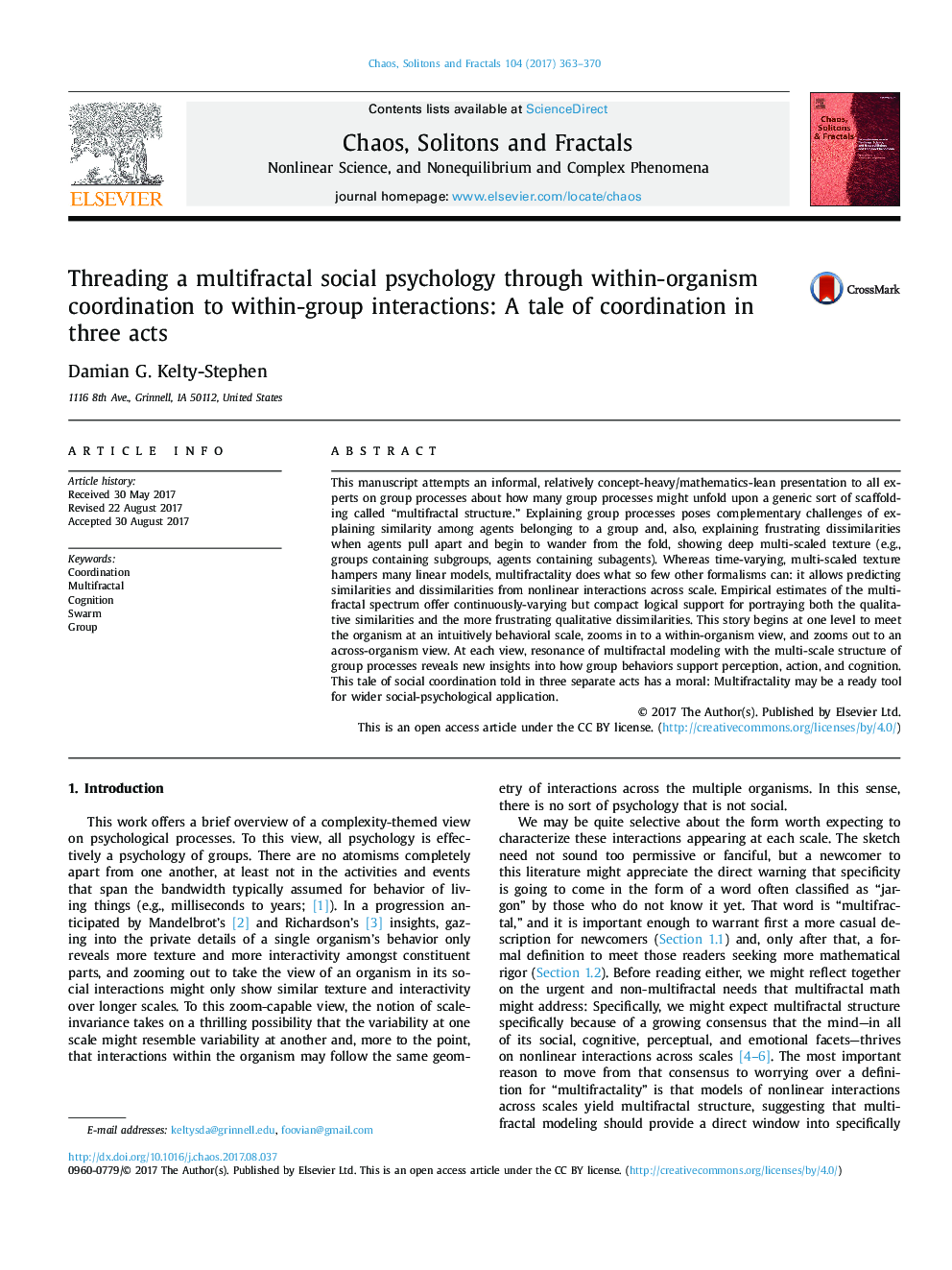| Article ID | Journal | Published Year | Pages | File Type |
|---|---|---|---|---|
| 5499540 | Chaos, Solitons & Fractals | 2017 | 8 Pages |
Abstract
This manuscript attempts an informal, relatively concept-heavy/mathematics-lean presentation to all experts on group processes about how many group processes might unfold upon a generic sort of scaffolding called “multifractal structure.” Explaining group processes poses complementary challenges of explaining similarity among agents belonging to a group and, also, explaining frustrating dissimilarities when agents pull apart and begin to wander from the fold, showing deep multi-scaled texture (e.g., groups containing subgroups, agents containing subagents). Whereas time-varying, multi-scaled texture hampers many linear models, multifractality does what so few other formalisms can: it allows predicting similarities and dissimilarities from nonlinear interactions across scale. Empirical estimates of the multifractal spectrum offer continuously-varying but compact logical support for portraying both the qualitative similarities and the more frustrating qualitative dissimilarities. This story begins at one level to meet the organism at an intuitively behavioral scale, zooms in to a within-organism view, and zooms out to an across-organism view. At each view, resonance of multifractal modeling with the multi-scale structure of group processes reveals new insights into how group behaviors support perception, action, and cognition. This tale of social coordination told in three separate acts has a moral: Multifractality may be a ready tool for wider social-psychological application.
Related Topics
Physical Sciences and Engineering
Physics and Astronomy
Statistical and Nonlinear Physics
Authors
Damian G. Kelty-Stephen,
